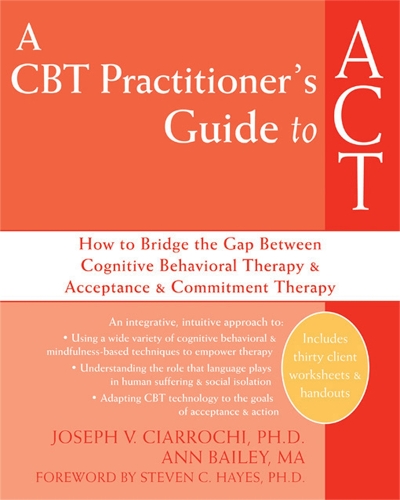
A CBT-Practitioner's Guide To Act: How to Bridge the Gap Between Cognitive Behavioral Therapy and Acceptance and Commitment Therapy
(Paperback)
Publishing Details
A CBT-Practitioner's Guide To Act: How to Bridge the Gap Between Cognitive Behavioral Therapy and Acceptance and Commitment Therapy
By (Author) Anne Bailey
New Harbinger Publications
New Harbinger Publications
1st January 2009
United States
Classifications
Professional and Scholarly
Non Fiction
616.89142
Physical Properties
Paperback
240
Width 204mm, Height 253mm, Spine 12mm
467g
Description
Cognitive behavioral therapy (CBT) practitioners who have integrated acceptance and commitment therapy (ACT) strategies into their practices find this revolutionary third-wave treatment enormously effective. However, many encounter challenges due to the differences between the two therapeutic models. The CBT-Practitioner's Guide to ACT explains how to bridge the CBT-ACT divide and utilize both therapies for a powerful treatment approach.
This practical guide, grounded in current research, clarifies how CBT and ACT differ, how they are similar, and includes all the information you need to begin incorporating ACT techniques into your clinical practice. Worksheets and exercises for both you and your clients appear throughout to help you seamlessly integrate the two therapies.
Author Bio
Joseph Ciarrochi, PhD, is professor of psychology at the School of Psychology, University of Wollongong in New South Wales, Australia.
Ann Bailey, MA, is an experienced acceptance and commitment therapy (ACT) practitioner and supervisor who developed an award winning public mental health service for the treatment of borderline personality disorder and anxiety disorders. The therapeutic models used in this service integrate ACT, cognitive behavioral therapy (CBT), and dialectical behavior therapy (DBT).
